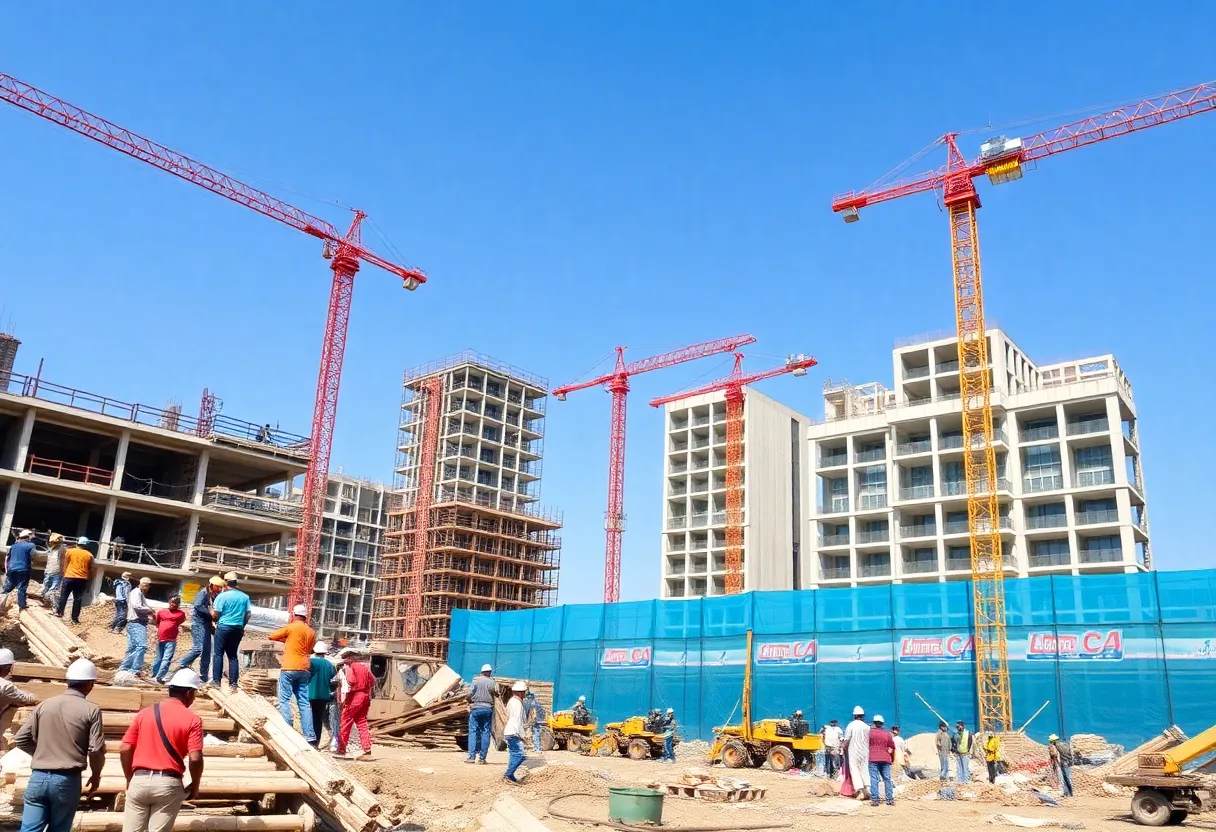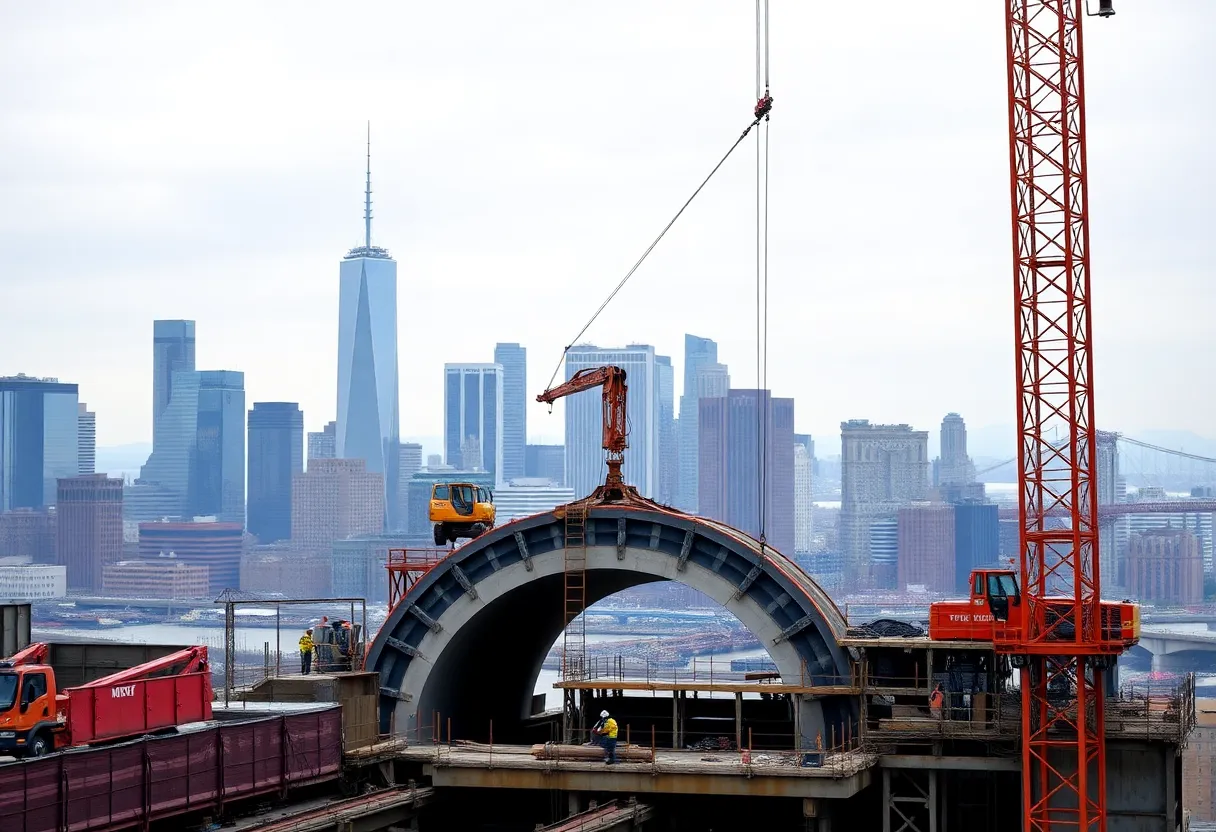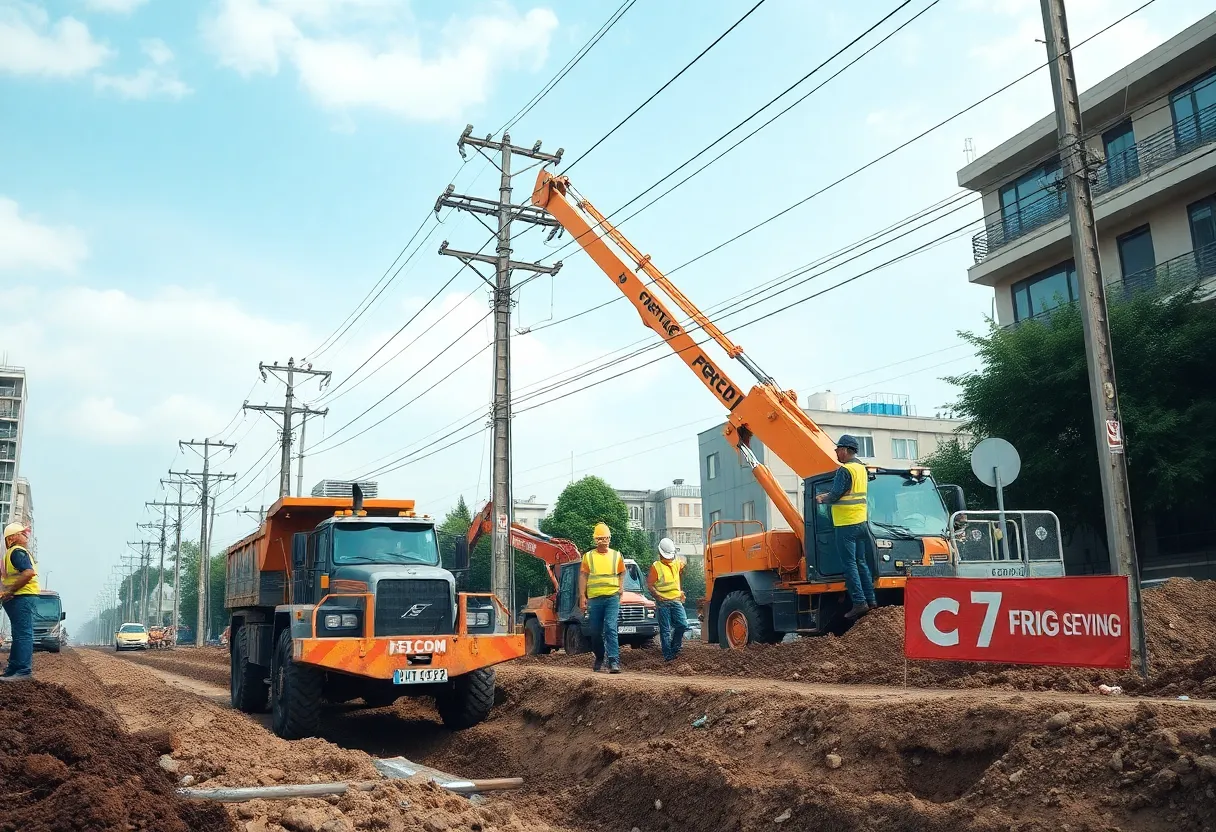United States, August 14, 2025
News Summary
The U.S. construction industry confronts significant challenges as it grapples with rising costs, labor shortages, and economic uncertainty while facing strong demand for housing and infrastructure. Despite a workforce of over 8 million and a projected growth rate of 5.6% in employment, structural issues hinder the industry’s ability to meet demands. The sector experiences remarkable wage growth, particularly in specialized positions, but the lack of support systems like childcare remains a barrier to full participation in the economy. The industry must adapt to these complexities to foster sustainable growth.
U.S. Construction Industry Faces Uncertainty Amid High Demand
The U.S. construction industry is grappling with a challenging environment as it moves into 2025. Although the demand for housing and infrastructure remains strong due to ongoing housing shortages and federal investments, the sector is hindered by rising costs and significant labor shortages. As a result, the industry is navigating through uncertainties that could affect its growth and sustainability in the near future.
According to recent data, construction employment reached over 8 million at the end of 2024, accounting for approximately 6.1% of all private-sector jobs across the country. However, despite these numbers reflecting a recovery since the Great Recession, construction employment has still not returned to pre-2008 levels, which saw a higher share of 4.8% in early 2011. The sector remains critical to the economic landscape, yet its ability to meet skyrocketing demand is being severely tested.
Labor Shortages and Employment Trends
The construction workforce comprises a wide range of occupations, including laborers (11.0%), first-line supervisors (7.7%), and carpenters (7.3%). Other notable roles include electricians (7.2%), plumbers (4.6%), HVAC technicians (3.7%), masons (2.4%), painters (2.2%), and roofers (1.6%). In addition, construction managers and general operations managers each represent 3.4% of the total employment in the sector, while project managers account for 2.7%.
Geographically, certain states exhibit a higher concentration of construction workers. For instance, Wyoming leads with 11.0% of its workforce in construction, followed closely by Utah at 9.5% and Idaho at 9.3%. Many of the Mountain West states dominate the top rankings for construction employment as a share of total jobs, bolstered by boom periods in housing and infrastructure. Conversely, states in the Northeast and some Midwest regions show slow growth in construction employment due to their more matured economies.
Wage Growth and Future Projections
Despite the uncertainties, construction employment is projected to grow by 5.6% from 2023 to 2033, outpacing average job growth across all sectors, which is forecasted at 4.0%. Currently, full- and part-time construction workers earn a national median wage of $58,360 annually, which is 18% higher than the overall median wage for all occupations. This increase in wages, which has risen by 15.4% in the past two years, reflects the increasing costs of labor and the tight workforce situation.
Illinois has emerged as the state with the highest median pay for construction workers, standing at $79,328 after adjusting for the cost of living. Other Midwestern states such as Minnesota ($70,923) and North Dakota ($68,859) also show competitive rates. In contrast, several Southern states, including parts of Florida and Texas, report lower, cost-adjusted construction wages, making them less attractive for job seekers.
Specific State Challenges
In Montana, the construction sector particularly faces challenges in finding skilled labor. The state’s Department of Labor and Industries projects that the construction industry will require around 1,000 new workers annually for the next eight years. A staggering 96% of contractors in Montana report having open positions, primarily targeting craft roles such as operators and mechanics. Regrettably, the lack of adequate childcare facilities has hindered approximately 70,000 workers from fully entering the labor market. However, the overall labor force in Montana has reached record levels, with over 10,000 individuals joining the workforce in just the past year.
Conclusion
As the U.S. construction industry continues to navigate the complexities of high demand coupled with labor shortages, it is crucial for stakeholders to address workforce challenges and strive for sustainable growth. Ongoing investments in training and skill development will be vital in attracting and retaining skilled workers in a fast-evolving market.
Frequently Asked Questions
1. What are the main challenges facing the U.S. construction industry?
The construction industry is facing challenges such as rising costs, labor shortages, and economic uncertainties which affect overall employment and future growth.
2. What is the average salary for construction workers in the U.S.?
The national median wage for construction workers is approximately $58,360 annually, which is higher than the overall median wage for all occupations.
3. Which states have the highest concentration of construction workers?
Wyoming, Utah, and Idaho have the highest concentrations of construction workers, with 11.0%, 9.5%, and 9.3% respectively.
4. How much is construction employment expected to grow over the next decade?
Construction employment is projected to grow by 5.6% from 2023 to 2033, outpacing the average job growth rate for all occupations.
Deeper Dive: News & Info About This Topic
Additional Resources
- KULR8: Construction Industry Employs 8.7% of Montana Workers
- Montana Right Now: Montana Construction Workers Earn 12th Most in U.S.
- Business Insider: Montana Contractors Face Labor Shortage
- KULR8: Best Paying Construction Professions in Montana
- Wikipedia: Construction Industry
Author: Construction NY News
The NEW YORK STAFF WRITER represents the experienced team at constructionnynews.com, your go-to source for actionable local news and information in New York and beyond. Specializing in "news you can use," we cover essential topics like product reviews for personal and business needs, local business directories, politics, real estate trends, neighborhood insights, and state news affecting the area—with deep expertise drawn from years of dedicated reporting and strong community input, including local press releases and business updates. We deliver top reporting on high-value events such as the New York Build Expo, infrastructure breakthroughs, and cutting-edge construction technology showcases. Our coverage extends to key organizations like the Associated General Contractors of New York State and the Building Trades Employers' Association, plus leading businesses in construction and real estate that power the local economy such as Turner Construction Company and CMiC Global. As part of the broader network, including constructioncanews.com, constructiontxnews.com, and constructionflnews.com, we provide comprehensive, credible insights into the dynamic construction landscape across multiple states.





